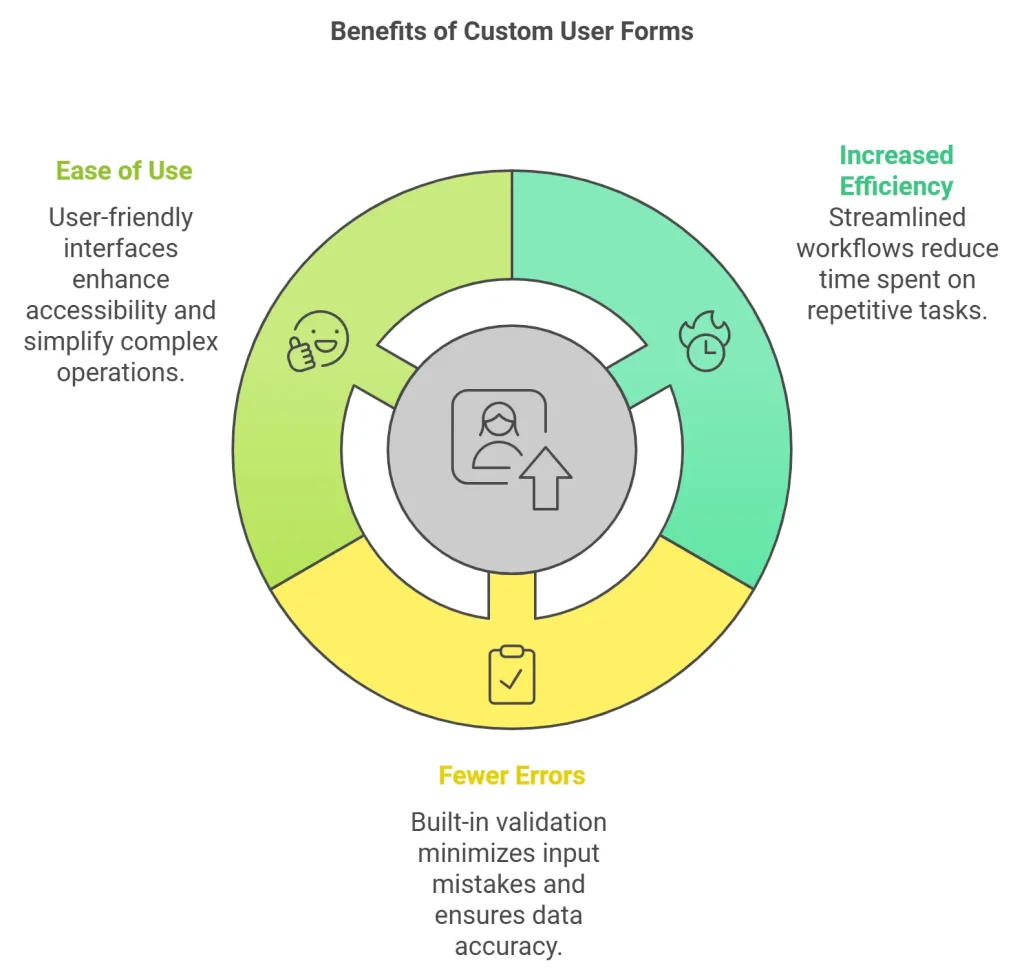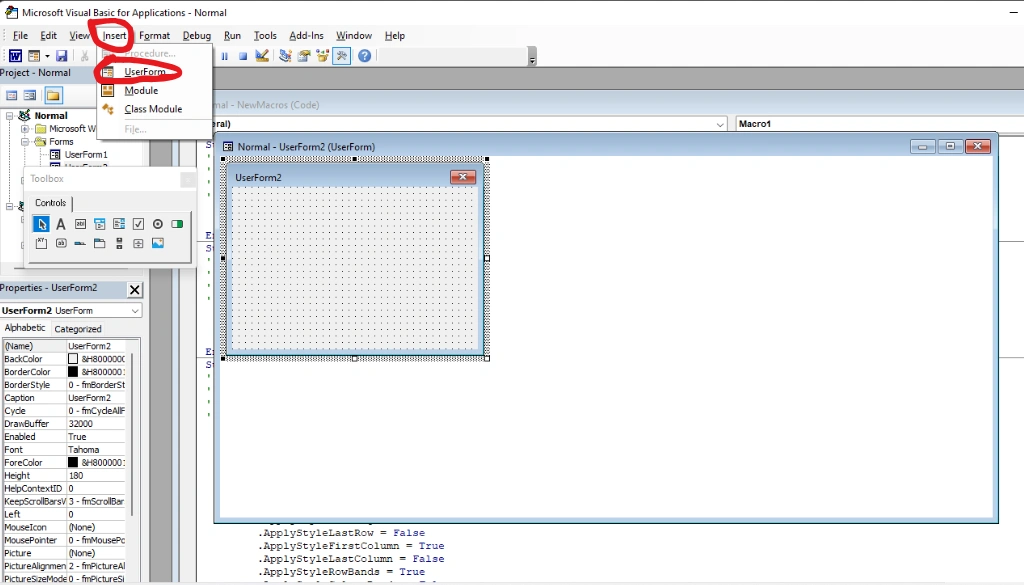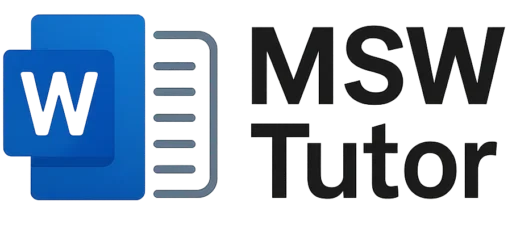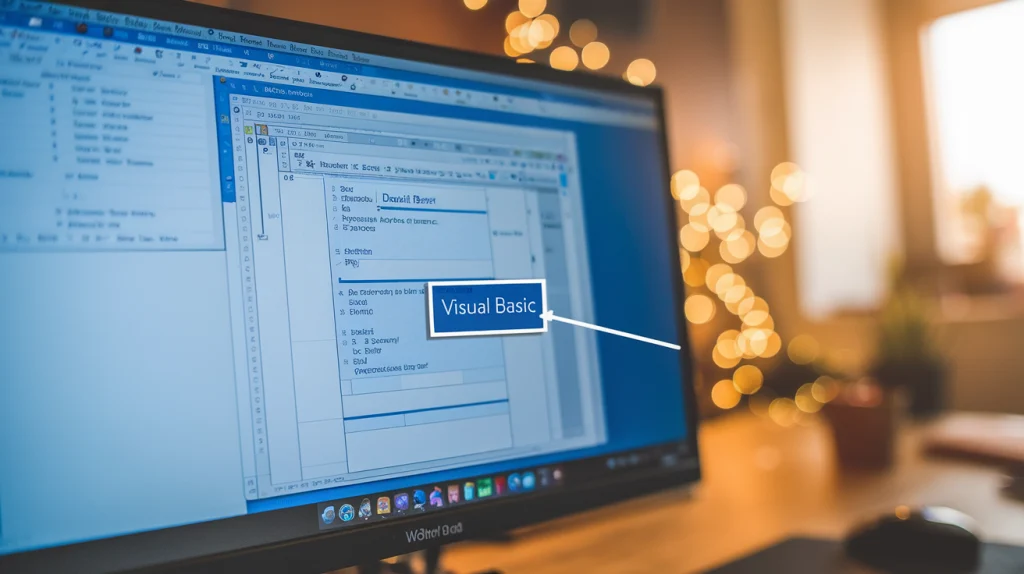Have you ever wanted an easier way to enter data in Microsoft Word? Making custom user forms and dialog boxes with VBA (Visual Basic for Applications) can save you time and make your documents more fun to use. Instead of doing the same tasks over and over again or using the basic options in Word, VBA helps you create custom forms and dialogs that fit your needs perfectly.
In this blog post, we’ll show you how to create custom user forms and dialog boxes with VBA in Word. We’ll explain why custom forms are useful, show you how to make them step-by-step and give you real-life examples. Whether you’re new to VBA or have some experience, this guide will help you understand how custom forms can make your work easier.
Why Make Custom User Forms in Word?

1. Work Faster and More Efficiently
Custom forms make repetitive tasks faster by giving you a simple way to enter information in a controlled way. For example, you can use custom forms to make sure data like names, dates, and department codes are always entered the same way. Imagine needing to add names or dates to a document often. Instead of typing each one every time, a custom form lets you do it all at once with just one click.
2. Easier to Use for Everyone
Forms and dialog boxes help users interact with documents more easily. A user-friendly form makes the document easier for people who aren’t familiar with it—no need to know any coding. For example, a simple form could help someone who doesn’t know about formatting easily add the information they need without worrying about alignment or styles. This is especially useful in a team setting where multiple people are working on the same document.
3. Fewer Errors
Using custom forms helps reduce mistakes. By setting up specific input fields, you make sure that the right kind of data is entered, which cuts down on errors. For example, if you need users to enter dates, you can add a date picker to make sure they enter dates in the correct format.
Step-by-Step Guide: How to Make Custom User Forms with VBA in Word
Step 1: Open the VBA Editor

To create a custom user form, you first need to open the VBA editor in Word. Here’s how you do it:
- Open Microsoft Word.
- Press Alt + F11 on your keyboard to open the VBA editor. This is where you can create and edit VBA code. If you are new to the VBA editor, check out how to master the VBA editor in MS Word for detailed guidance.
- Go to Insert > UserForm to start making your custom form.
Step 2: Design the User Form
Now that you have your form open in the VBA editor, it’s time to design it. You can add different parts, like text boxes, labels, combo boxes, and buttons.
- Toolbox: Use the toolbox to drag and drop elements into your form. Here are some common elements:
- Labels: Use these to identify fields.
- Text Boxes: Let users type in text.
- Combo Boxes: Give users a dropdown list to choose from.
- Command Buttons: Add buttons like OK or Cancel to your form.
Example: If you want to make a form to collect user information, you could include text boxes for the first name, last name, and email address, along with a command button to submit the information.
Step 3: Add VBA Code to Your User Form
Once you’ve designed the form, you need to add VBA code to make it work.
- Double-click on any part of your user form to open the code window.
- Write the VBA code that tells the form what to do when a user interacts with it. For example, you can make it so that when someone clicks the OK button, the input is added to the Word document. If you want to learn more about editing macro code, see how to edit macro code in MS Word.
Example Code:
Private Sub cmdOK_Click()
Dim userName As String
userName = Me.txtName.Value
ActiveDocument.Content.InsertAfter "Hello, " & userName & "!"
Unload Me
End SubIn this example, the code inserts a greeting followed by the user’s name into the Word document when the OK button is clicked.
Step 4: Test the User Form
After adding your code, it’s time to test your user form. Make sure to check for common issues, like making sure buttons work and fields accept the correct input.
- Press F5 or click on the Run button to open your form. Make sure to test for edge cases, such as incorrect or unexpected input, to ensure robustness.
- Test all input fields, buttons, and functions to make sure everything works the way it should.
It’s important to test your form well to find any possible errors before using it in a real document. For help troubleshooting any issues, refer to how to troubleshoot macro errors in MS Word.
Step 5: Link the Form to a Macro
To make the form easy to use, you can link it to a macro.
- In the VBA editor, go to Insert > Module.
- Write a macro to show the form:
Sub ShowUserForm()
UserForm1.Show
End Sub- Close the VBA editor and go back to your Word document.
- Assign the macro to a button or a keyboard shortcut to make opening the form quick and easy. You can follow how to assign macros to buttons or shortcuts in MS Word for step-by-step instructions.
Example: Custom Feedback Form
Let’s go through an example of making a custom feedback form. Imagine you need feedback from several reviewers on a document, and you want them to give their input in a structured way.
1. Design the Feedback Form
- Labels: “Name”, “Email”, “Feedback”
- Text Boxes: Input fields for name, email, and a multiline box for feedback.
- Command Button: An “OK” button to submit the feedback.
2. Code the Form
The VBA code will take the user’s input and add it to the end of the document.
Private Sub cmdOK_Click()
Dim reviewerName As String
Dim reviewerEmail As String
Dim reviewerFeedback As String
reviewerName = Me.txtName.Value
reviewerEmail = Me.txtEmail.Value
reviewerFeedback = Me.txtFeedback.Value
ActiveDocument.Content.InsertAfter "Reviewer: " & reviewerName & vbCrLf & _
"Email: " & reviewerEmail & vbCrLf & _
"Feedback: " & reviewerFeedback & vbCrLf & vbCrLf
Unload Me
End SubThis code takes the information entered by the reviewer and adds it to the document in a clear format.
Frequently Asked Questions About Custom User Forms in VBA
1. Do I Need Programming Experience to Make User Forms in Word?
While some programming knowledge can help, VBA is pretty easy to learn. Even if you’re a beginner, you can start with simple forms and learn more advanced features over time. Recording macros is a good way to get started without having to write code from scratch.
2. Can I Use Custom Forms in Any Word Document?
Yes! Once you’ve made a form, you can save it in a Word template (.dotm) and use it in multiple documents. This way, your custom forms are always ready whenever you need them.
3. How Can Custom Forms Help My Team?
Custom forms provide a standard way for your team members to enter data, ensuring consistency and reducing errors. This can be especially useful in business situations where accurate data collection is important, like filling out customer information forms or logging employee work hours.
4. Can I Customize How My User Forms Look?
Definitely! You can change the look of user forms by adjusting fonts, colors, and sizes to match your style or make them easier to use.
5. Are There Other Uses for User Forms Besides Data Entry?
Yes! User forms can also be used for navigating within a document, gathering feedback, triggering certain actions, or even managing document workflows.
Conclusion
Making custom user forms and dialog boxes with VBA in Word can make your documents more efficient, accurate, and easy to use. Whether you’re automating repetitive tasks, making things easier for your users, or cutting down on mistakes, custom forms are a powerful tool to help you work better. With a little practice, you can learn how to use VBA forms and completely change the way you use Word. For more information, you can visit the official Microsoft VBA documentation.
Ready to make your first custom form? Start with a simple form and add more features as you get comfortable with VBA. Your productivity will thank you!

